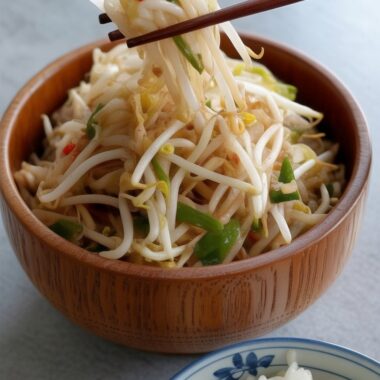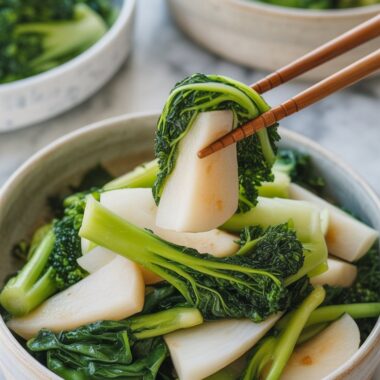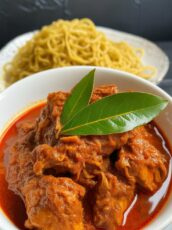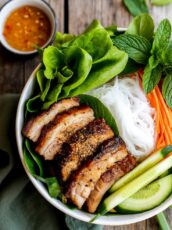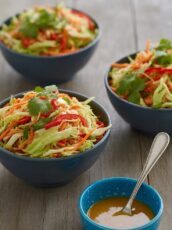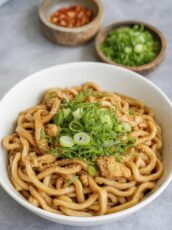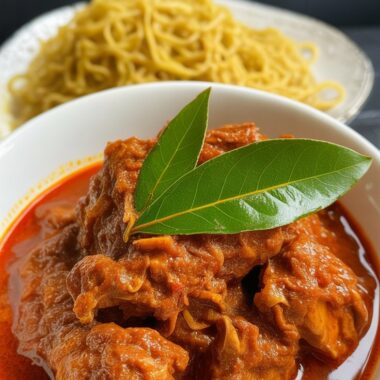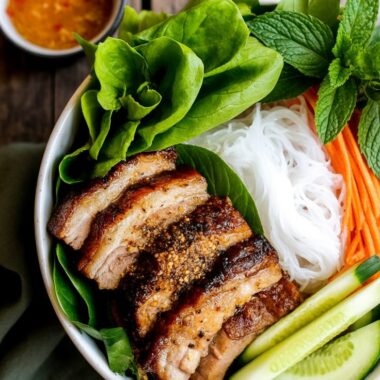Mitarashi Dango is one of those snacks that brings me back to lazy Sunday afternoons. The sweet soy glaze, the soft and chewy texture—there’s just something comforting about skewered rice dumplings fresh off the pan. I first had them at a tiny shop tucked away in Tokyo, and every time I recreate them at home, it’s like bringing a little piece of that memory into my kitchen.
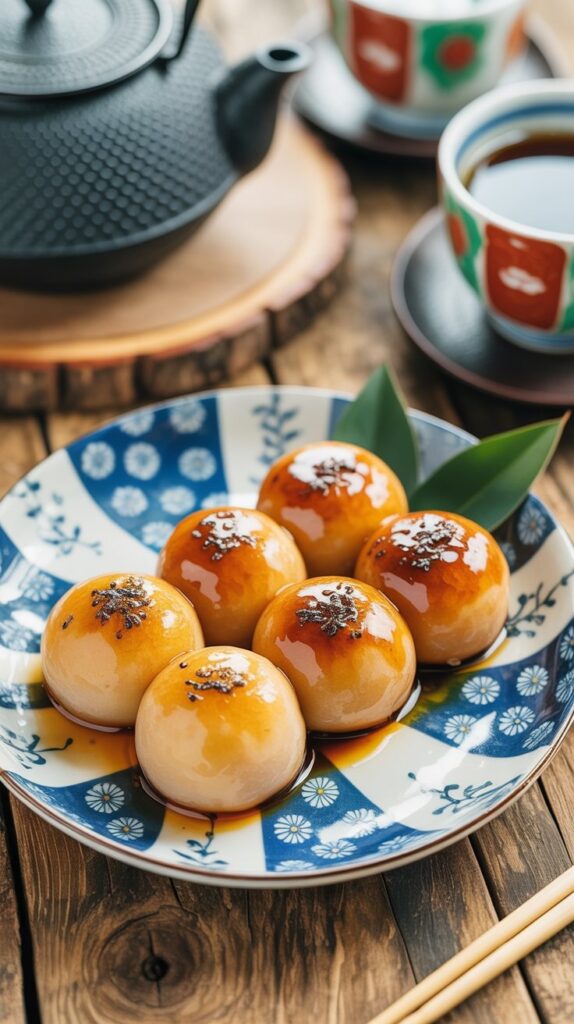
These chewy rice dumplings are grilled slightly for that bit of char and coated in a sticky, glossy glaze that’s just the right balance of sweet and salty. And if you enjoy a cup of green tea now and then, this is the perfect companion.
A Bit of Background
Mitarashi Dango actually got its name from a sacred water font near a Kyoto shrine. It started as an offering but quickly turned into a beloved snack—one that’s now sold just about everywhere in Japan, from street stalls to supermarkets.
I love how something with such humble origins can end up being such a comfort food for so many people.
What You’ll Need
You only need a handful of ingredients, but the kind of rice flour you choose makes a big difference in texture. After some trial and error, here’s what I’ve found works best:
- Joshinko – This is rice flour made from regular Japanese short-grain rice. It gives the dango a firmer texture.
- Shiratamako – This one’s made from glutinous rice, so it adds that signature chew.
- Boiling water – To bring everything together into a soft dough.
- For the glaze – A quick mix of soy sauce, sugar, mirin, and potato starch. Once it thickens up, you’ll get that shiny, sticky finish everyone loves.
Sometimes, if I’m in a pinch and can’t find both flours separately, I use dangoko, which combines both types. The texture isn’t exactly the same but still pretty good.
How I Make It at Home
I like to keep things simple, and this recipe comes together pretty quickly. Here’s how I usually do it:
Mix and knead the dough
I mix the rice flours in a bowl and slowly add hot water while kneading. Don’t worry if the “earlobe texture” thing sounds strange—just aim for a soft but not sticky dough that you can roll into smooth little balls.
Boil the dumplings
Once the balls are shaped, I drop them into boiling water. When they float, I scoop them out and give them a quick dip in ice water. This helps set their texture. Then I skewer them—usually three on a stick, sometimes four if I’ve got more dough.
Give them a bit of char
Here’s the fun part: I use a small kitchen torch to lightly brown the outside. You could also use a nonstick pan over medium heat. It’s totally optional, but the toasty flavor really does something special.
Whip up the glaze
In a small saucepan, I combine soy sauce, sugar, mirin, and a little potato starch slurry. It thickens in just a few minutes. Don’t overcook it—once it’s glossy and thick enough to coat the back of a spoon, take it off the heat.
Time to eat
I brush the glaze all over the dumplings and serve them while they’re still warm. That’s when they’re at their best.

A Quick Tip on Rice Flours
Over the years, I’ve played around with different flour ratios. My go-to is 50/50 joshinko and shiratamako—it gives a chewy but stable texture that holds up well on the skewer.
If you want them extra chewy, bump shiratamako up to 60%. Just don’t go overboard, or they’ll turn mushy.
Also, avoid using mochiko or Thai glutinous rice flour for this. I’ve tried both, and the texture’s too soft and sticky—it’s better saved for mochi or daifuku.
Can I Make It Ahead?
You can! But I’ve learned that dango tends to firm up as it sits. If you’re planning to make them a few hours ahead, add some sugar to the dough—about 20% of the flour weight. That keeps them softer for longer.
As for the glaze, you can prep it ahead of time too. Just don’t thicken it too much on the stove. Let it cool with a bit of runniness so you can reheat it without turning it into jelly.
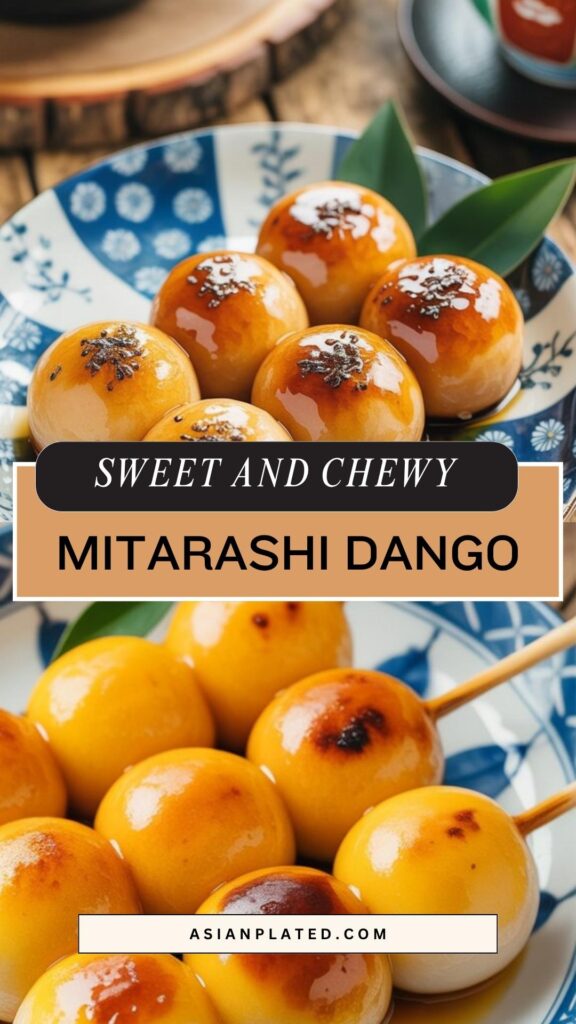
What to Serve It With
For me, nothing beats a skewer of mitarashi dango and a hot cup of roasted green tea. It’s also lovely with matcha or even cold barley tea in the summer.
Sometimes I’ll serve it alongside anko-filled dango for contrast, especially when friends are over. It’s always a hit.
How to Store Leftovers
If you’ve got extra glaze, pop it in a small airtight container and store it in the fridge for up to 3 days. You can reheat it on the stovetop or microwave it with a splash of water to loosen it up.
As for the dango themselves—honestly, they’re best fresh. But if you need to store them, wrap tightly and refrigerate. When ready to eat, warm them slightly in the microwave and brush with freshly heated sauce.
Mitarashi Dango
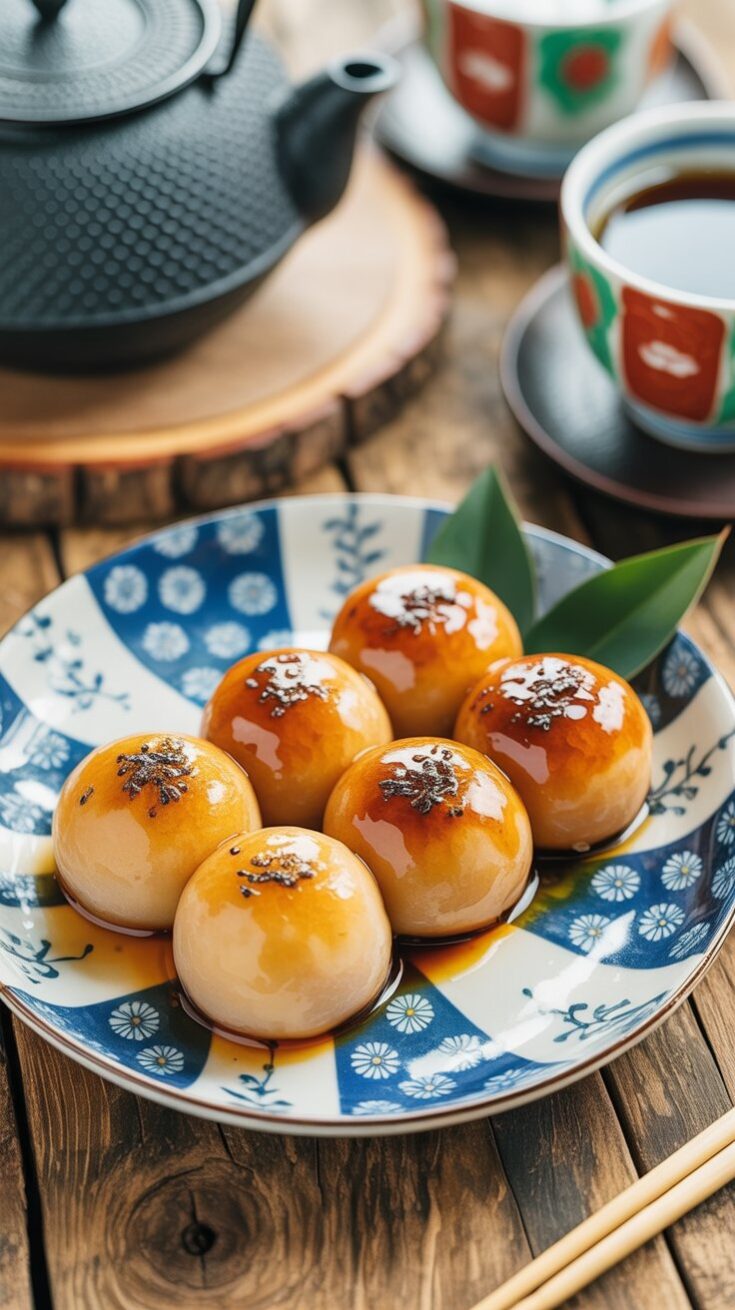
Chewy, lightly charred rice dumplings drizzled with a glossy, sweet-salty soy glaze—Mitarashi Dango is one of Japan’s most beloved street snacks, and you can easily make it at home.
Ingredients
For the Dumplings (Method 1: With Joshinko + Shiratamako)
- ¾ cup shiratamako (glutinous rice flour)
- ⅔ cup joshinko (rice flour made from short-grain rice)
- ⅔ cup boiling water
For the Dumplings (Method 2: With Dangoko)
- 1⅓ cup dangoko (Japanese rice dumpling flour)
- ⅔ cup cold water
For the Mitarashi Glaze
- 2 Tbsp soy sauce
- 2 Tbsp mirin
- 4 Tbsp sugar
- ⅔ cup water
- 2 Tbsp cornstarch or potato starch
Instructions
- Making the Dumplings : Start by combining the shiratamako and joshinko in a mixing bowl and stir them together using chopsticks. If you're using dangoko instead, place it in a separate bowl and follow the same process.
- Gradually add hot water to the flour mixture (or cold water if using dangoko), a little at a time, mixing as you go. The dough should come together and feel slightly dry rather than sticky.
- Once clumps start to form, bring the dough together with your hands. Knead it into a smooth ball—the texture should feel similar to pressing your earlobe.
- Divide the dough into 8 equal portions, then split each one in half. You’ll end up with about 16 uniform pieces. Roll each piece into a smooth ball. If any ball develops cracks, dampen your fingertip and smooth them out.
- Bring a large pot of water to a gentle boil and prep a bowl of iced water nearby. Carefully drop the dumplings into the boiling water and give them a stir to keep them from sticking.
- Once they float to the surface, let them cook for another minute or two. Then transfer them directly to the ice water to cool.
- Drain them well, place them on a moistened tray to prevent sticking, and gently thread three dumplings per skewer.
- Making the Glaze : In a saucepan (off heat), whisk together the soy sauce, mirin, sugar, water, and cornstarch until the mixture is fully dissolved and smooth.
- Now place the saucepan over medium heat and continue to stir. The sauce will thicken quickly—keep whisking until it becomes glossy and coats the back of a spoon.
- Remove from heat and let it cool slightly. If you're making it ahead of time, take it off the heat a bit earlier since it continues to thicken as it cools.
- Serving Suggestions : For extra flavor, give the skewered dango a quick sear. A blowtorch, grill, or hot pan works great—just enough to lightly brown them. Then spoon or drizzle the warm soy glaze generously over the top. Serve right away while they're tender and chewy.
- Storage Tips : To Freeze Before Cooking: Shape the dough into balls and freeze them in a single layer in an airtight container. Boil from frozen—no need to thaw.
- To Freeze After Cooking: After boiling and cooling, pat dry and freeze the dango (making sure they don’t touch) in an airtight container. Reheat by boiling or microwaving until warm.
Notes
- Flour Ratio Tips: Joshinko gives structure, while shiratamako adds that soft, chewy bite. A 50-50 mix works beautifully, but you can increase shiratamako up to 60% for a chewier result.
- For Softer Dumplings: Mix in 40g of sugar with the flour to help the dumplings stay tender longer, especially if you're not serving them right away.
Nutrition Information:
Yield: 5 Serving Size: 1Amount Per Serving: Calories: 77Total Fat: 0gSaturated Fat: 0gTrans Fat: 0gUnsaturated Fat: 0gCholesterol: 0mgSodium: 357mgCarbohydrates: 18gFiber: 0gSugar: 13gProtein: 1g
Asianplated.com, occasionally offers nutritional information for recipes contained on this site. This information is provided as a courtesy and is an estimate only. This information comes from online calculators. Although allchickenrecipes.com attempts to provide accurate nutritional information, these figures are only estimates.
Frequently Asked Questions
Q: Can I freeze the dumplings?
I’ve tried it, but freezing tends to mess with the texture. They get a bit hard and dry after thawing. If you really need to make them in advance, you’re better off storing the dough and cooking it fresh.
Q: What if I can’t find joshinko or shiratamako?
Try dangoko. It’s a blend of rice and glutinous rice flours, and pretty reliable. Look for it at Japanese markets or online Asian grocery stores.
Q: Is it okay to use just one type of rice flour?
You could, but the texture won’t be quite right. All joshinko makes it too firm, all shiratamako too soft. The combo really brings balance.
Let me know if you give these a try—I’d love to hear how they turn out for you. This one’s a simple treat that always makes me feel like I’ve made something special, even on a regular day.
Try other Japanese recipes:

